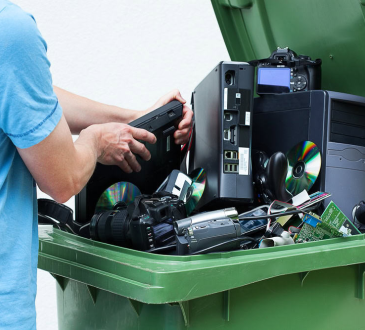In 2019, half of all employees worldwide already worked outside of their main office. Many of these individuals carried out their jobs on a “remote” basis. What’s more, they worked out of the primary headquarters for at least 2.5 days each week.
In the US alone, 42% of employees have started working full-time from home as of June 2020. During the same period, only 26% worked in-office or on business premises. This means that almost twice as many are now working remotely than those working from an office.
If you’re one of these folks who now need (or choose) to work remotely, then you need a home office set up for productivity. Don’t worry, though, as that’s exactly what this post is for. Read on to learn how to create an excellent work environment so that you can enjoy the benefits of working at home.
Choose a Work Schedule That’s Best Suits Your “Brain”
In a 2019 survey, 78% of respondents said that flexible schedules are key to worker retention. So, even before the global health crisis, remote work was already crucial to employees.
Remote work, after all, allows people to work in their element and in their own time. Early birds and night owls, for instance, are often more productive based on the time they work.
According to scientists, there may be some impairments in the brains of night owls during the day. As such, knowing if you’re an early bird or a night owl can be key to unlocking your productivity. In this way, you can schedule your work based on when your brain works at its peak.
Working Remotely Can Be Quite Lonely
The freedom that remote work offers do have some drawbacks, one of which is loneliness. This may not bother you if you’ve always preferred working by yourself. Indeed, a 2013 study found that 86% of workers favor the “lone wolf” set up, citing that they work better when alone.
However, if you’ve always been a team player, you should get ready for some lonely work sessions.
Isolation is easy to avoid if you live with other people. If you live on your own, though, then you should consider “teaming” up with a colleague who works the same hours as you. This way, you can have someone to talk to, albeit virtually, whenever you feel the blues creeping up on you.
You Need to Set Boundaries
If you need to share your workspace with other family members, it’s best to have a sit-down with them. This is especially true if you have kids, as they may become a little too distractive. Talk to them about your work and schedule and how crucial it is to your household’s income.
For example, tell the kids that you need “alone-time” from 8 AM to noon and from 1 PM to 5 PM. However, be sure to let them know that they can always talk to you about super important matters.
Speaking of which, you can also introduce the concept of having a “tell-all” during family meals. For instance, let them know that they can tell you all about their day during lunch or dinner. However, you should also be strict when you ask them to refrain from distracting you while you work.
You’ll Have Different Distractions to Deal With
In the office, distractions can take the form of chatty workmates or people talking at the same time. You won’t face the same situation at home, but that doesn’t mean you won’t have any distractions. You may become distracted yourself since there’s no one to supervise you physically.
If you don’t have kids, a “too” quiet work environment can mess with your focus. It may draw your attention away from work, and you may end up thinking about other stuff. Working alone may also put you at risk of surfing the Internet for non-work related stuff.
Regardless of the source of distraction, prepare yourself to face them as you work at home. It would be mostly up to you when it comes to avoiding and preventing them.
That’s why you need to master the art and science of self-control. For example, you can set goals and then reward yourself every time you accomplish them. An incentive can help you remain focused while keeping “self-induced” distractions at bay.
Choose a Well-Lit Nook for Your In-Home Office
Now that you’re working full- or even part-time from home, it’s best to take advantage of your windows. Meaning, you should consider choosing a location for your in-home office with a lot of windows. That’s because the more natural light that permeates a room, the more productive you may get.
For starters, natural light (AKA sunlight) can improve mood and boost creativity. It can even help prevent eye strains and headaches that artificial light can cause.
In fact, one study found that after an increase in exposure to sunlight, workers reported a 51% drop in eye strain. The study’s participants also said that they experienced a 63% decrease in headaches.
That should be enough reason to set up an in-home office in a room with plenty of windows. Besides, if you rely less on artificial light, you can lower your home’s lighting costs.
Invest in Quality Tech Gear
If you haven’t yet, consider upgrading your tech essentials, be it a laptop or a desktop computer. After all, your devices will influence how productive you will be as a remote worker. If your notebook or PC runs super slow, then you’re unlikely to get a lot of work done.
Also, old computers can no longer satisfy the high requirements of today’s software. Most complex applications now require at least 8 GB of RAM in computers. Unfortunately, older units typically came with only 2GB or 4GB of memory.
Suppose that you’re going to take on graphics- or video-related remote working jobs. In this case, you’d need apps like Adobe Photoshop, Illustrator, or Premiere. You won’t be able to install these programs on a computer that has less than 8GB of RAM.
Even if you don’t need such complex programs, you’re still going to use Internet browsers. Unfortunately, these are RAM hoggers, ten active tabs of which can already use up 725 MB to 3.1 GB of memory! So, if you only have 2 or 4 GB of RAM, you can expect your computer to run at a snail’s pace.
The great news is that computer makers often run numerous sales and discounts. However, they often reserve the best deals for Cyber Monday or Black Friday. If you time your purchase on either of these days, you can upgrade your gear without blowing your budget.
Introduce Some Variation
Even before the pandemic, people have already been spending 90% of their time indoors. The thing is, spending too much time cooped up inside a building can take a toll on your overall health.
For starters, if you spend too much time within the four walls of your home, you may be lacking a bit of sun vitamin. Even if you don’t, you may be sitting a little too much, which can cause various health woes like body aches and pains. Studies also found that too much indoor time can fuel irritability and sleep issues.
So, as much as possible, you should also spend some of your working time outdoors. You can alternate from working in your in-home office and your garden or patio. Varying work environments may be the key to improving your productivity.
Green Up Your Office Space
Speaking of outdoor time, you can also bring some of the outdoors into your in-home office. According to studies, indoor plants can help brighten up moods. They also appear to raise productivity and concentration while lowering stress levels.
Plus, plants need carbon dioxide, so they can also help improve air quality. Studies also say that rooms filled with plants (and windows) tend to have fewer mold spores. In this way, they may be able to help boost the quality of air in your office.
The vivid colors of plants also make them excellent indoor decors. They can spice up your otherwise drab or minimalistic in-home office.
What’s more, many herbs, like lemongrass, thyme, and mint, are easy to grow indoors. With these, you can make your home office not only look good but smell good too! Plus, you can use them for cooking delish and nutritious meals.
Use These Nifty Tips to Make the Most Out of Remote Work
There you have it, your ultimate guide on how to make the most out of working remotely. What’s important is to set the right expectations so that you can come up with achievable goals. From there, you can reward yourself every time you accomplish an objective.
Don’t forget your tech gear and work environment, too! The better they are, the more productive you can become.
Ready for even more useful and practical guides like this? Don’t be shy then! Feel free to look through as many of our other news and blog posts!




